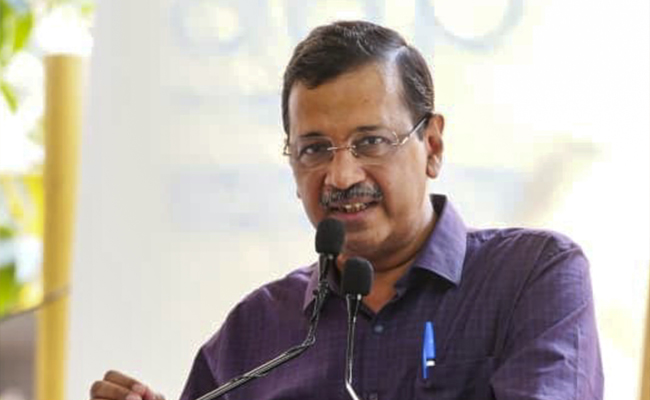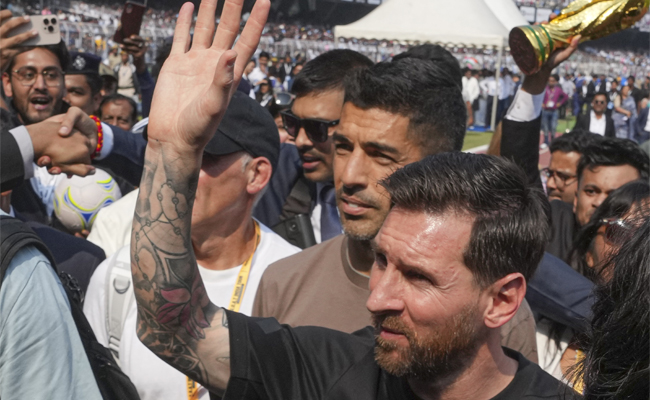There was a time when June meant copious rains. Lakes, rivers, and reservoirs would over-flow and politicians would take the opportunity to offer prayers to these water bodies. Called as offering of bagina, politicians used the occasion to get publicity in the media. This state-sponsored ritual has significance as it is a form of thanksgiving to the rain gods for their bounty which would help farmers’ carry out their agricultural operations smoothly, resulting in the overall economic prosperity.
What is going on now on the river fronts stands in stark contrast. This time, the state is sponsoring a ceremony to immerse the ashes of the Covid victims. Revenue Minister R Ashok who oversaw the arrangements for this ceremony recently on the banks of the river Cauvery claimed that he considered it his privilege to do this traditional post-cremation ceremony as it is a belief that when the ashes of the dead, preserved in small clay pots, are immersed in the flowing waters, the souls of the deceased attain their liberation. The cultural significance of the belief apart, the minister’s exuberance over his participation in an event of this nature is absurd. The government instead of lamenting the fact that a situation like this has arisen, primarily because of its own multiple failures, seems to be considering it as an achievement that it could organize the event.
As thousands of people fell victim to the dreaded Covid-19 pandemic in the absence of immediate medical attention, the relatives were too scared to perform the last rites of the victims or in some cases, they did not have the resources to do this. Instead of taking pride in the fact that the government could sponsor the ritual in which the unclaimed ashes of victims were duly released into the river, the government should have used the occasion to introspect over its all-round failures which had led to the death of so many people during the pandemic.
Earlier, ministers of this government had taken pride in the fact that they were able to put up temporary cremation grounds and to provide refreshments to those who brought bodies of their near and dear for cremation. This was when the existing crematoria in many parts of the state could not cope with the pressure of steady flow of bodies. Here again, the ministers instead of owning up the responsibility for the death of so many people, which is a direct consequence of gross inadequacy of health infrastructure, used the occasion as a publicity event. Nothing could expose the government’s insensitivity more than this.
Ever since the pandemic started playing havoc, local administration, various social organizations, and even individual volunteers have been disposing off hundreds of bodies, which remained unclaimed. Now, suddenly the minister sprang up to organize this post-cremation ritual and to publicize the event in the media. Generally, these rituals vary widely across castes and communities, and nobody demanded that the state should sponsor a standardized ceremony. Organizing events of this sort is not the primary responsibility of the government. This was obviously a ploy to divert the public attention from the failures of the government, which led to so many deaths in the first place. Second, the government also failed to take action against people who were capitalizing on the people’s misery by allotting hospital beds and life-saving medicines in black market.
More importantly, it is ironical that the state, which has been organizing caste-based vaccination camps privileging priestly classes over Dalits for administering Covid-19 vaccine, is now organizing post-cremation rituals for the dead according to Brahminical traditions disregarding the diverse social traditions that the people followed for this ceremony. The state deputy chief minister’s justification for caste-based vaccine camps, a gross discriminatory practice amidst a humanitarian crisis, was even more disconcerting. ‘Don’t priests have a right to get vaccinated?’ he asked in response to the criticisms. Of course, the priests have the rights but so do others. The question is why should people belonging to one caste be prioritized over others in the administration of vaccine? At least now, the Revenue Minister, who was so keen on organizing the ceremony for mass immersion of the ashes of Covid victims in accordance with Vedic Brahminical traditions, should take up the responsibility of arranging free vaccination for the less fortunate castes and communities.
Let the Truth be known. If you read VB and like VB, please be a VB Supporter and Help us deliver the Truth to one and all.
Panaji (PTI): As part of a crackdown against tourist establishments violating laws and safety norms in the aftermath of the Arpora fire tragedy, Goa authorities on Saturday sealed a renowned club at Vagator and revoked the fire department NOC of another club.
Cafe CO2 Goa, located on a cliff overlooking the Arabian Sea at Vagator beach in North Goa, was sealed. The move came two days after Goya Club, also in Vagator, was shut down for alleged violations of rules.
Elsewhere, campaigning for local body polls, AAP leader Arvind Kejriwal said the fire incident at Birch by Romeo Lane nightclub at Arpora, which claimed 25 lives on December 6, happened because the BJP government in the state was corrupt.
An inspection of Cafe CO2 Goa by a state government-appointed team revealed that the establishment, with a seating capacity of 250, did not possess a no-objection certificate (NOC) of the Fire and Emergency Services Department. The club, which sits atop Ozrant Cliff, also did not have structural stability, the team found.
The Fire and Emergency Services on Saturday also revoked the NOC issued to Diaz Pool Club and Bar at Anjuna as the fire extinguishers installed in the establishment were found to be inadequate, said divisional fire officer Shripad Gawas.
A notice was issued to Nitin Wadhwa, the partner of the club, he said in the order.
Campaigning at Chimbel village near Panaji in support of his party's Zilla Panchayat election candidate, Aam Aadmi Party leader Kejriwal said the nightclub fire at Arpora happened because of the "corruption of the Pramod Sawant-led state government."
"Why this fire incident happened? I read in the newspapers that the nightclub had no occupancy certificate, no building licence, no excise licence, no construction licence or trade licence. The entire club was illegal but still it was going on," he said.
"How could it go on? Couldn't Pramod Sawant or anyone else see it? I was told that hafta (bribe) was being paid," the former Delhi chief minister said.
A person can not work without bribing officials in the coastal state, Kejriwal said, alleging that officers, MLAs and even ministers are accepting bribes.




